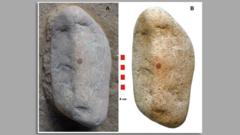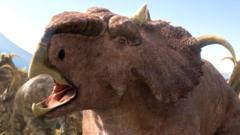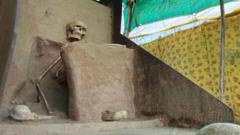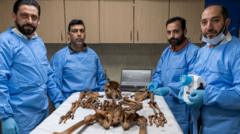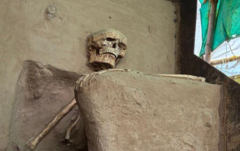Archaeologists have unearthed shocking evidence at Charterhouse Warren, where the remains of at least 37 individuals—including men, women, and children—indicate cannibalistic behavior following their brutal slaughter.
Gruesome Archaeological Findings: Evidence of Cannibalism at Bronze Age Grave

Gruesome Archaeological Findings: Evidence of Cannibalism at Bronze Age Grave
A recent study reveals that remains from a mass grave in England suggest victims were eaten in a ritualistic practice.
The remains, which were initially discovered in 1970, lay across a 50-foot ditch, displaying horrific signs of violence. Researchers have noted bent bones, fractured skulls, and cuts consistent with butchering techniques, suggesting a more complex and grisly history than previously acknowledged.
Professor Rick Schulting, an archaeologist at Oxford University and the study's lead author, expressed his astonishment at the findings, emphasizing that such behavior was unexpected for the time period in question. The site, dating back between 2210 and 2010 B.C., had largely gone unnoticed until now, with the initial excavation lacking detailed documentation due to the amateur nature of its discoverers.
Over the decades, the mass grave had become a vestige of British archaeological records until Schulting and his team's meticulous research brought it back into focus. This revelation adds a new layer to our understanding of human behavior during the Bronze Age, as scholars seek to comprehend the sociocultural dynamics that could result in such extreme acts of violence and cannibalism.
Professor Rick Schulting, an archaeologist at Oxford University and the study's lead author, expressed his astonishment at the findings, emphasizing that such behavior was unexpected for the time period in question. The site, dating back between 2210 and 2010 B.C., had largely gone unnoticed until now, with the initial excavation lacking detailed documentation due to the amateur nature of its discoverers.
Over the decades, the mass grave had become a vestige of British archaeological records until Schulting and his team's meticulous research brought it back into focus. This revelation adds a new layer to our understanding of human behavior during the Bronze Age, as scholars seek to comprehend the sociocultural dynamics that could result in such extreme acts of violence and cannibalism.




